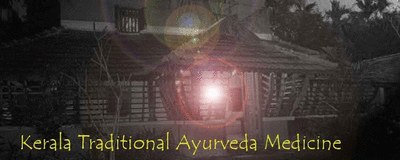CLINICAL FEATURES
| Sr. No. | Symptoms | Asymptomatic | Organ involment |
| (1) | Headache | | Heart |
| (2) | Giddiness | | Brain |
| (3) | Irritability | | Retina |
| (4) | Fatigue | | Kidney |
| (5) | Insomnia | | |
| (6) | Vertigo positional | | |
| (7) | Palpitation | | |
| (8) | Polyuria | | |
Symptoms showing organ involvement or symptoms related with complications
(I) Heart
(1) Angina
(2) Dyspnoea -Nocturnal
(3) Orthopnea
(II) Brain
(2) Visual Disturbances
(2) Severe Headache
(3) Stroke
(4) Encephalopathy
(III) Kidney
(1) Polyuria
(2) Nocturia
(3) Fatigue
(4) Anemia
(5) Vomiting
(6) Edema
(7) Features of Uremia
(IV) Retina
(1) Visual disturbance
(2) Retinal hemorrhage
(3) Retinal detachment
Asymptomatic :
A large number of patient in the early stages have no symptoms \. That is why it is called the silent killer.
Symptoms :
(1) Headache
(i) Present on waking in the morning.
(ii) Usually in occipital region, radiating to frontal.
(iii) Throbbing
(iv) Most headaches are tension headaches.
(v) Paroxysmal.
(2) Epistaxis
It is not particularly associated with mild hypertension where patients present with epistaxis and high blood pressure. It is important to dissociate HT as a cause of epistaxis from a pressure response to the episode.
(3) Nocturia
This is one of the most frequent consequences of blood pressure elevation resulting from reduction in urine concentrating capacity.
Signs :
(1) Elevated blood pressure i.e. blood pressure above 139 mm of Hg systolic and above 89 mm Hg diastolic on several occasions qualifies as hypertension irrespective of age
In the established cases, the blood pressure is persistently 180 mm systolic and 100 mm diastolic or over. It may be much higher reaching 260 mm systolic and 120 mm diastolic.
(2) There is left ventricular hypertrophy recognized by
(a) Cardiac impulse which is forceful and sustained
(b) An increase ,in the area of cardiac dullness.
(c) Lengthening and lowered tone of the first sound at the apex
(d) Increase is size of the heart in radiography
(e) Left axis deviation in ECG
(3) The 2nd aortic sound is accentuated.
(4) The radial pulse is hard and resists compression. The artery is generally felt to be thickened and it may be tortuous.
(5) The changes in Retina :
These have been divided in 4 grades (Keith &Wagenar)
(a) Grade-I : Changes consist of narrowing tortuosity and irregularity of the renal A.
(b) Grade-II : The changes are more marked and there is nipping of veins where the arteries cross in front of them.
(c) Grade-II : Presence of exudates, hemorrhages.
(d) Grade-IV : Papilloedema
